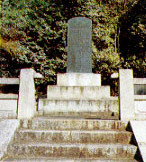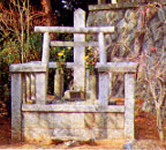


|
 | The beginning of the Sonno-Joi Movement. |
 |
The original driving force of the Meiji Restoration was the Sonno-Joi Movement.
It started growing rapidly in the Tempo period (1830-1843).
Those who took an actve part were Yanagawa-Seigan, a poet, Rai-Mikisaburo, a Confucian, Umeda-Unpin, a samurai of the Wakasa clan who was executed at the Ansei Purge, and Gessho, a priest at Jojuin of Kiyomizudera.
Their activities influenced the royalists ever after. |
 | The regional development of the Sonno-joi Movement |
| There two rebellions rose against the Tokugawa Shogunate in 1863. Tencugumi was a rebellions troop organized by Nakayama-Tadamitsu and Yoshimuro-Torataro that rose up in Minami Yamato (in Nara Prefecture). The other rebellion was started by Hirano-Kuniomi at Ikuno in Tajima (in Hyogo Prefecture). Though both were not successful, they had a great influence on a lot of samurai in the spirit of overthrowing the regime. |
 |
|